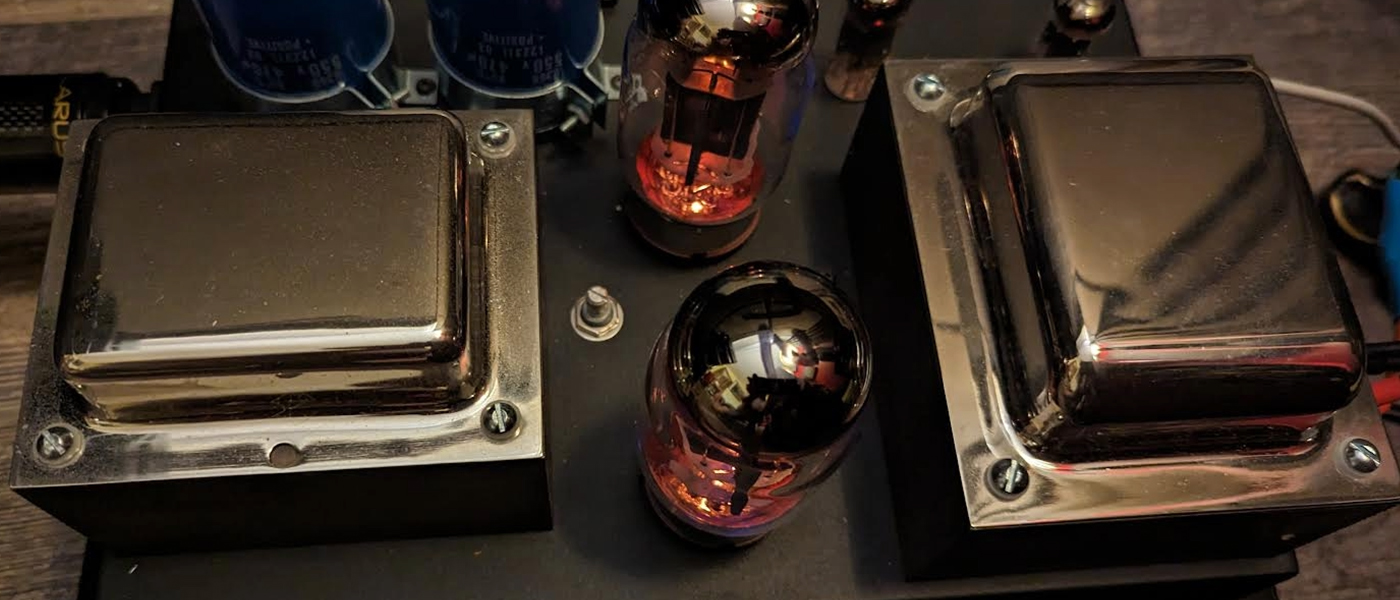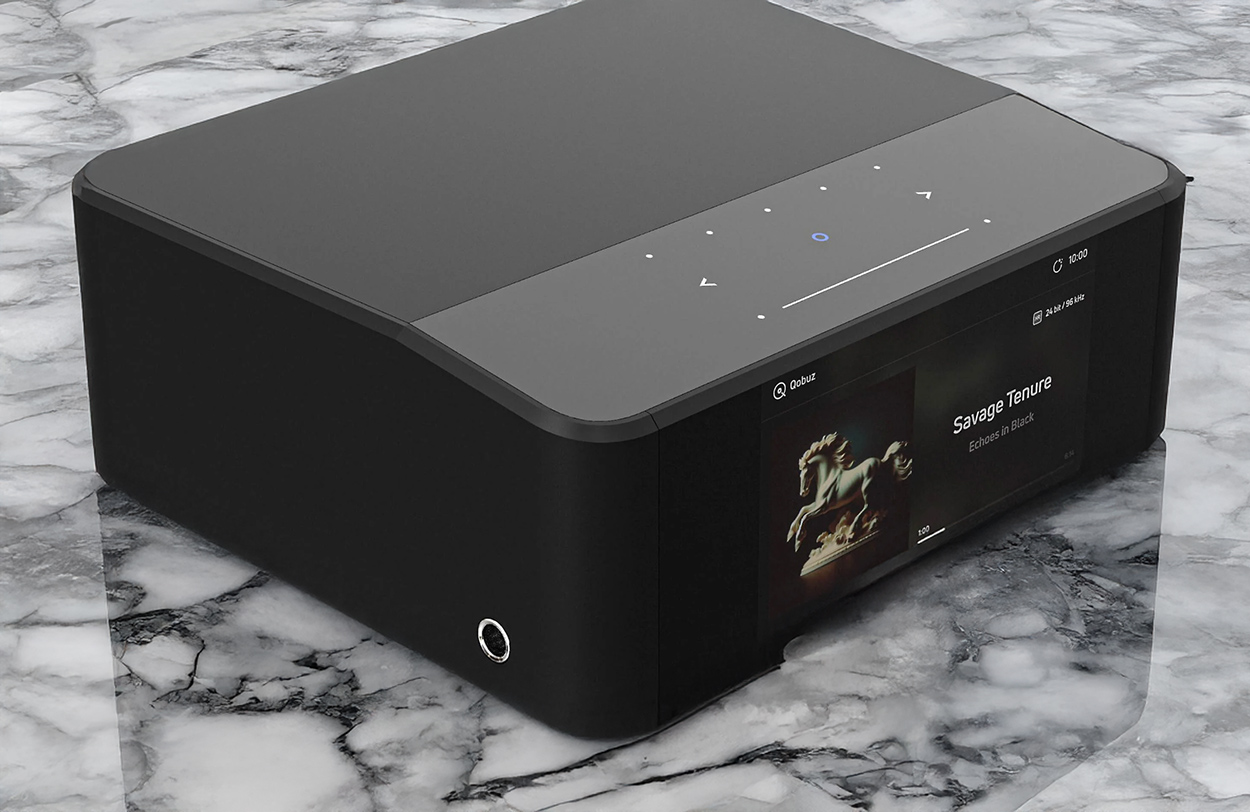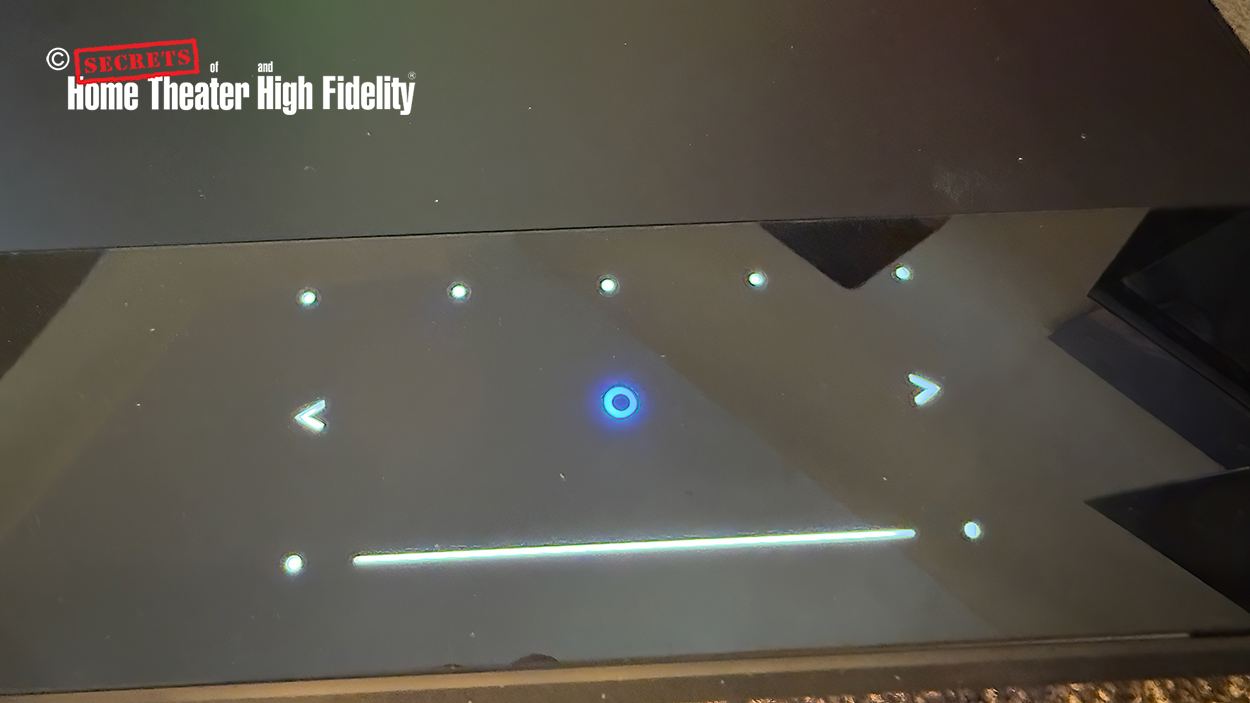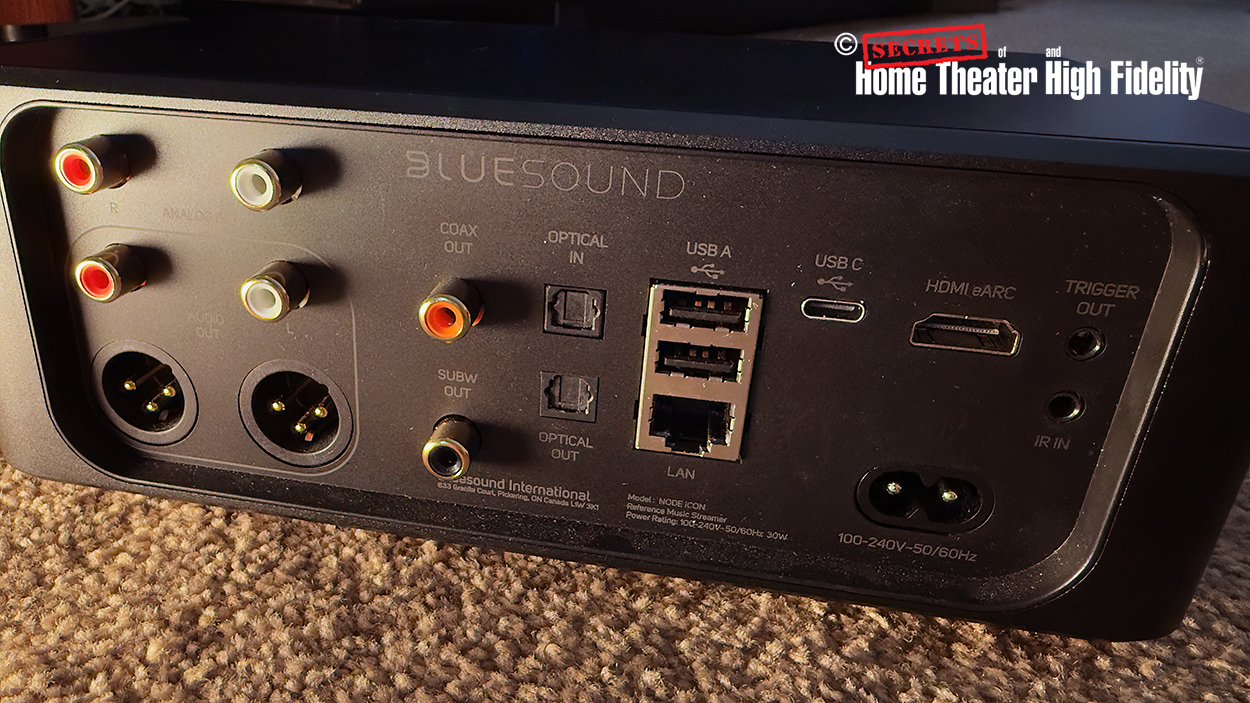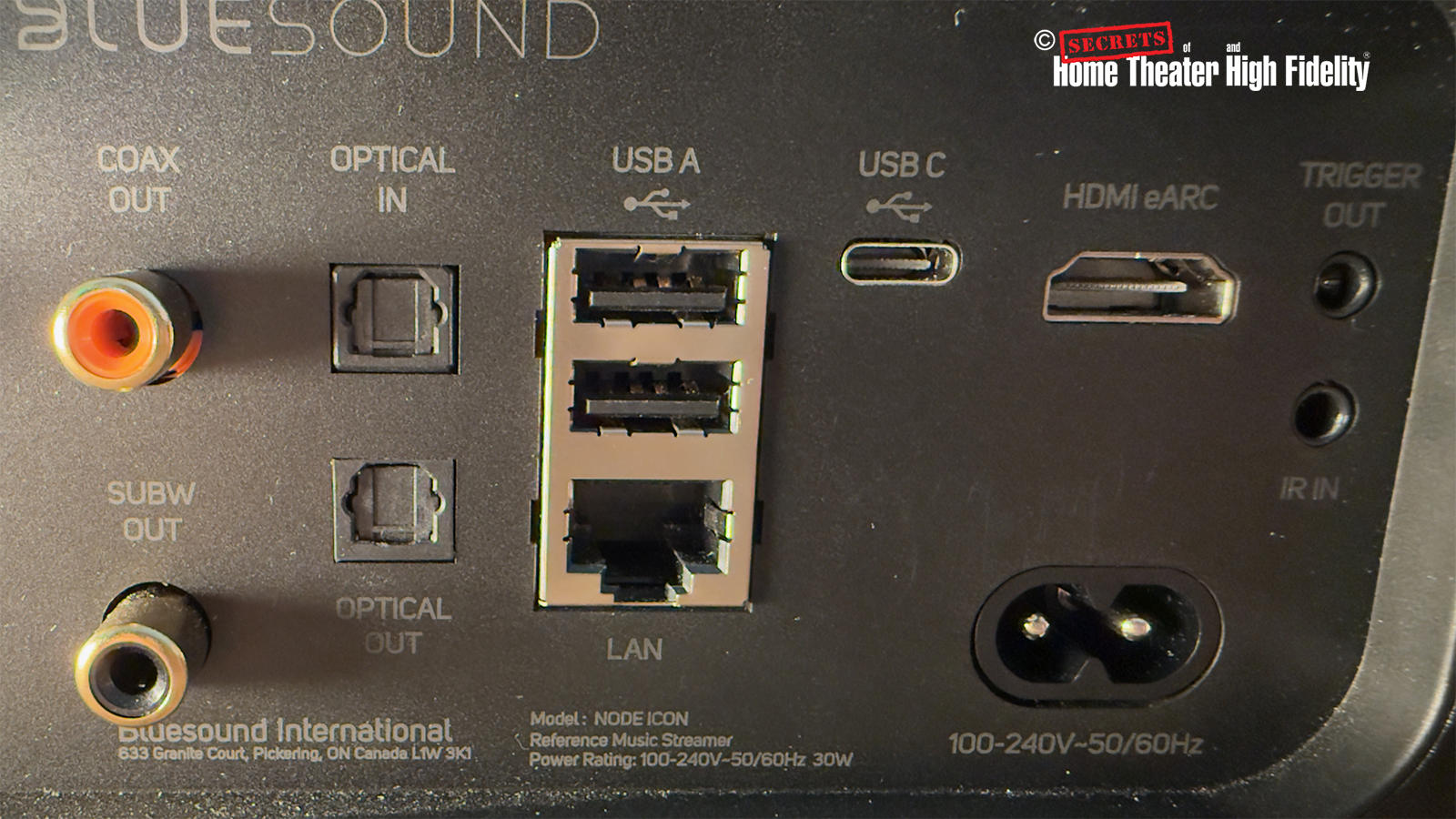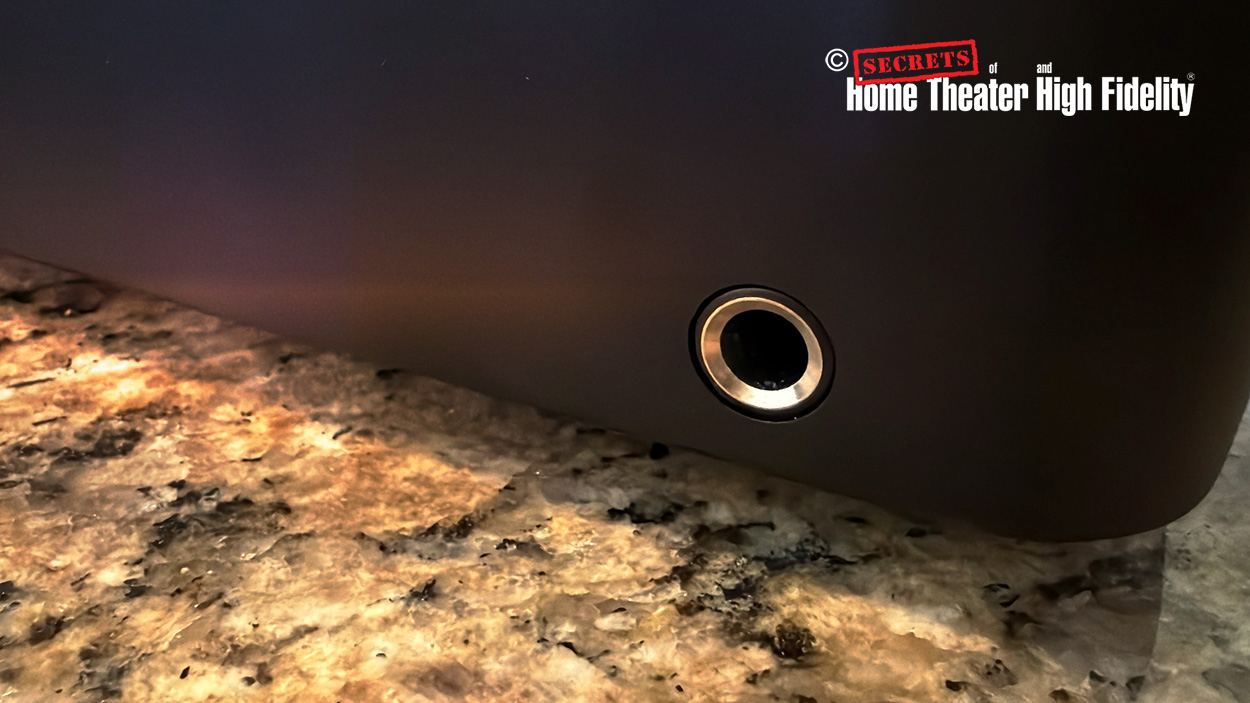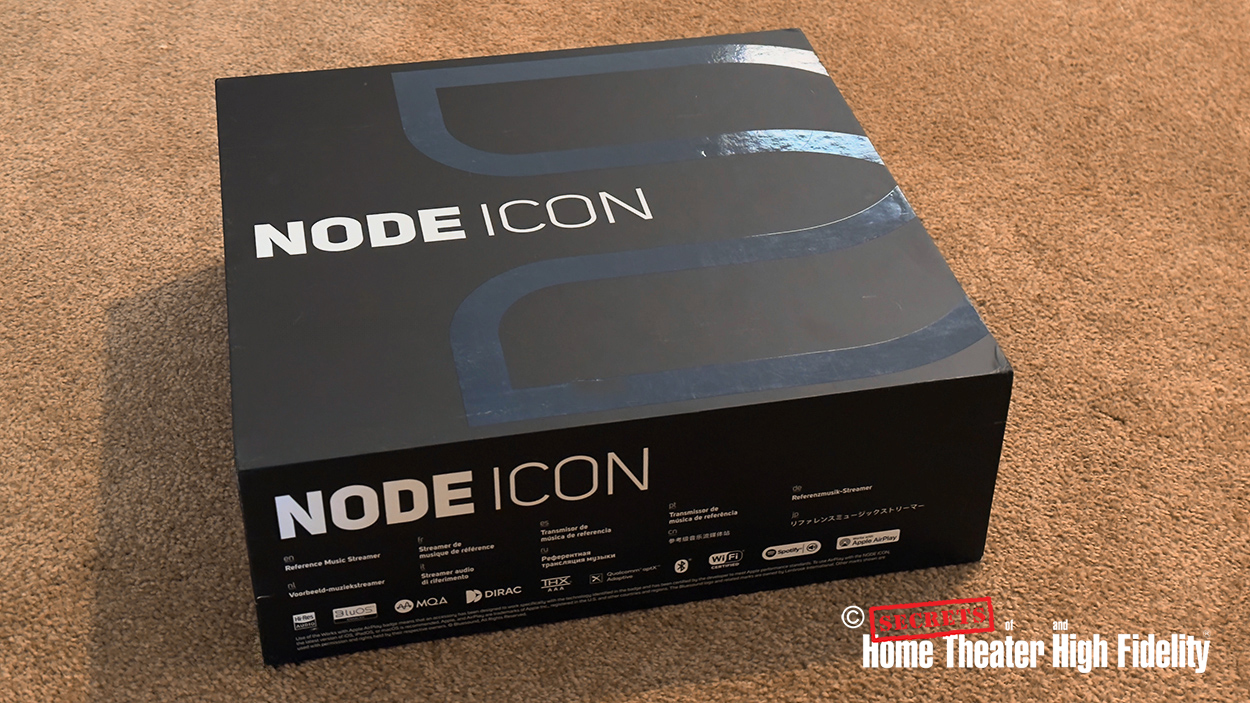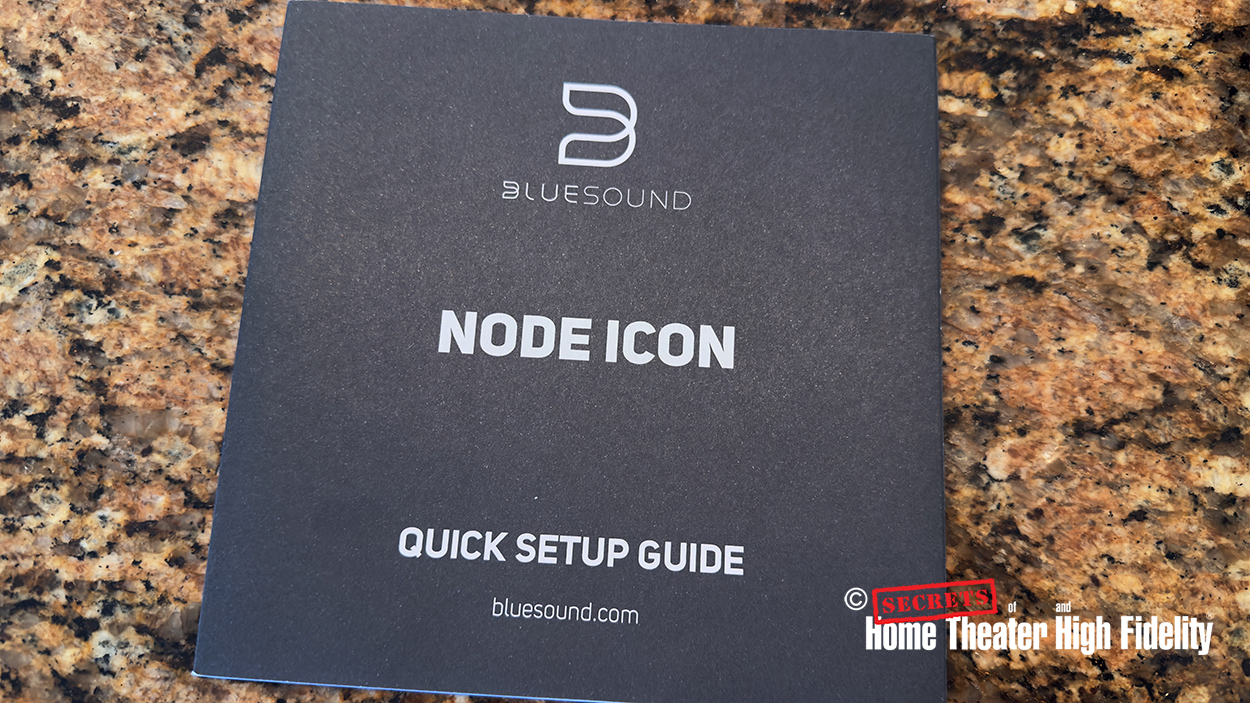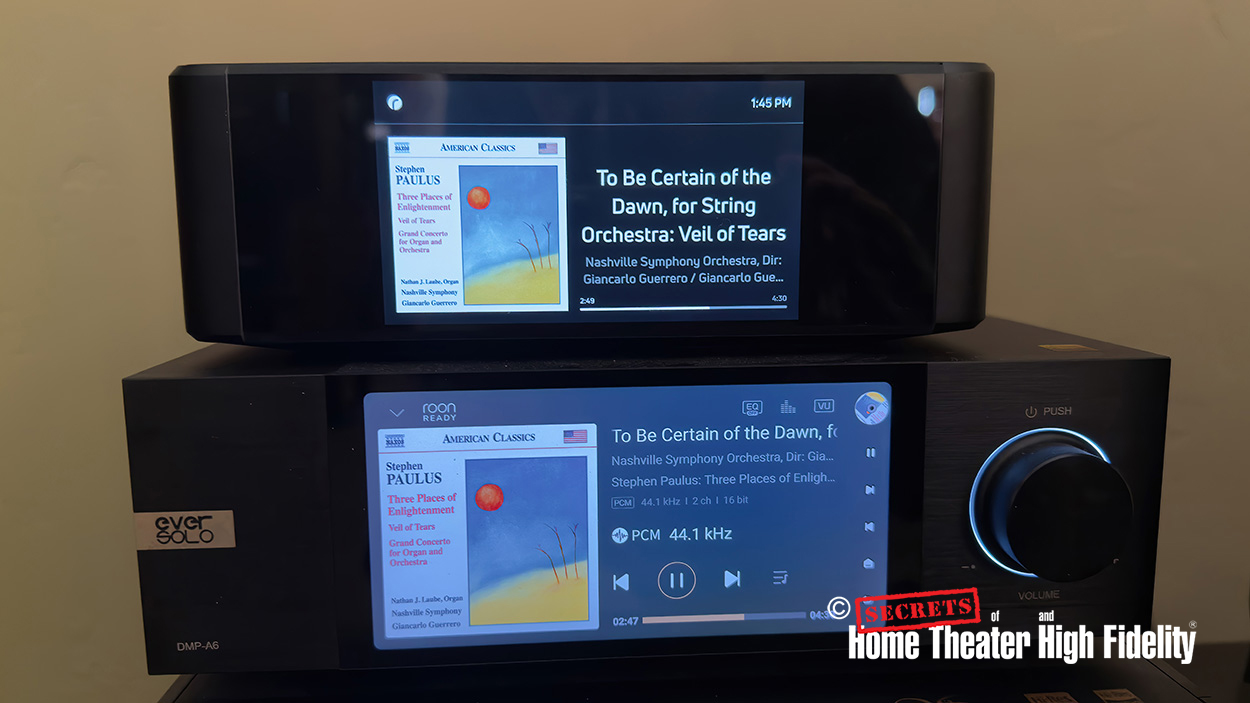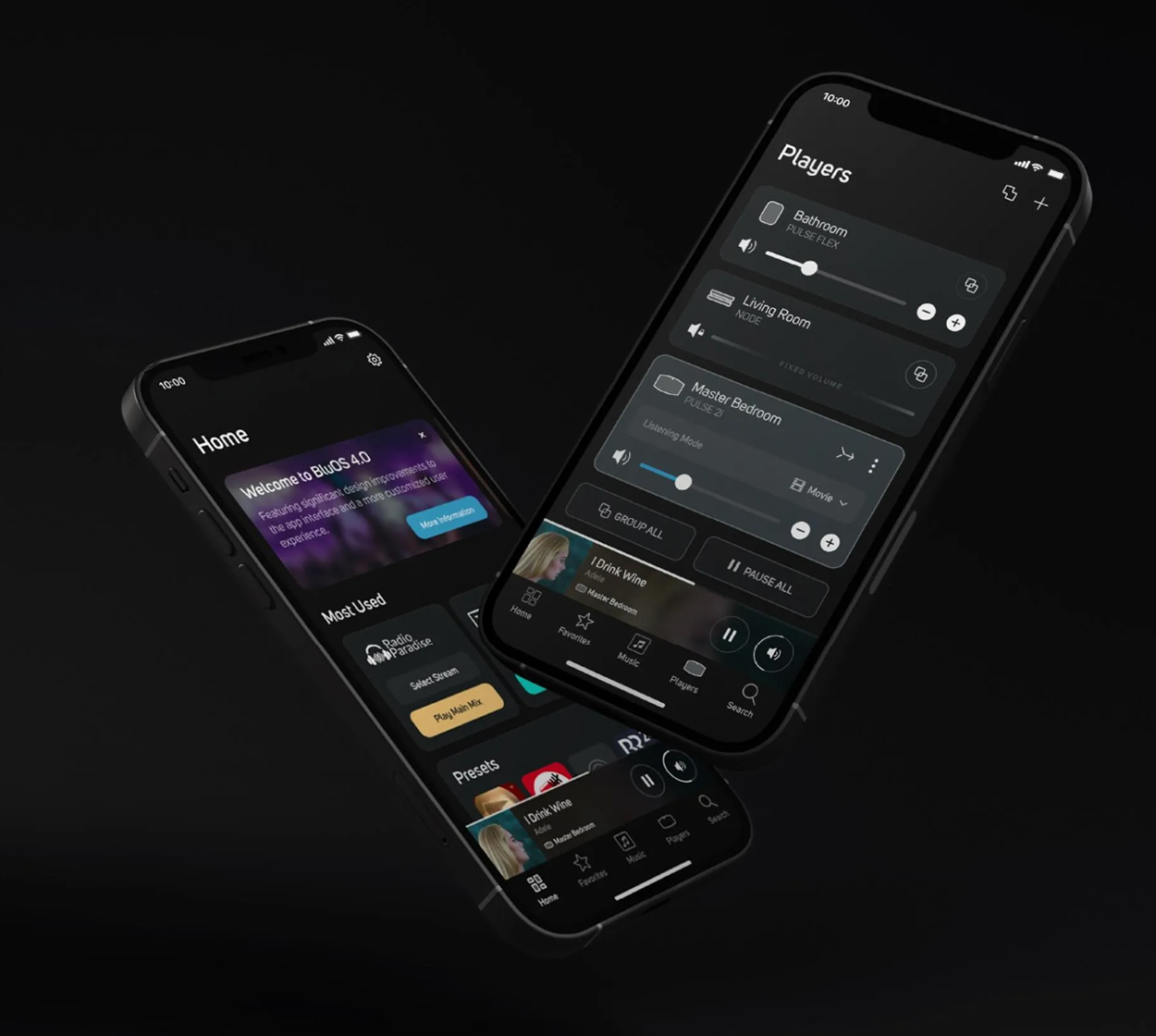It also may be one of the best streamers out there by almost any criteria, and considering the competition, it’s got a reasonable price. The Node Icon could be a home run for Bluesound, which has been a very popular brand for audiophiles since 2013 when they introduced their first streaming products.
The Bluesound Node Icon is a sleek but not attention-grabbing component. It sports a 5-inch color display and plays just about any audio format. I found it easy to set up and was pleased it fully supported Roon playback. Music playback was as good as I have heard from a streamer, some of that is likely because it uses two ESS Sabre ES9039Q2M DAC chips, each running in mono. It also has two 1/4” headphone jacks, something you don’t find on every streamer. With powered speakers, it can serve as a fully capable audio system, and it supports digital and analog inputs so you can plug in a CD player or other component. A touch panel on the top of the case lets you switch to other inputs or use the buttons as presets for internet-based streaming services like Tidal or Spotify.
The Bluesound Node Icon
- Build quality and design are first-rate. The Node Icon should fit into any room or home environment.
- Sound quality is excellent. Dynamic range, positioning of instruments, and vocals are as good as I have heard from a digital component.
- Enough inputs and outputs to serve as a digital hub for other equipment.
- Bright screen to display album art, superior to other similar products I’ve reviewed or seen.
- Works well with Roon, no glitches.
- No remote provided, you must use the app or preset buttons on the top of the unit.
- The screen the Node Icon provides is the screen you get. Can’t customize anything except which screensaver clock style you get.
- As an optional extra, you can buy the Dirac Live product, a leader in sound correction.
Before the Bluesound Icon Node was introduced I’ve had more than a few Bluesound products in my home, with good results. Bluesound was at the right place at the right time when Sonos stumbled by not supporting high-resolution music in their multi-room music systems.
Bluesound was ready with a product that could play files with higher resolution than CDs and play them in as many rooms as you were willing to put one of their Nodes into. Each Bluesound Node is basically a Wi-Fi or network-connected box that could stream music from the internet or your home collection of files on any available storage medium.
Supported Audio File Formats:
MP3, AAC, WMA, WMA-L, OGG, ALAC, OPUS
Native Sampling Rates:
up to 192 kHz
Signal-to-Noise Ratio:
-129dB (XLR), -121dB (RCA)
Supported High-Quality Audio File Formats:
FLAC, MQA, ALAC, WAV, AIFF, MPEG-4 SLS
Bit Depth:
16 – 24 Bit
Distortion:
THD+N, 0.0004%
DSD Support:
Up to DSD256
Audio Controls & EQ:
BluOS Controller App
Headphone Continuous Output Power (THD<0.1%):
150mW, 16Ω / 235mW, 32Ω / 56mW, 250Ω / 23mW, 600Ω
Supported Multi-Channel Audio Formats:
Dolby Digital®
DAC Chipset:
ESS ES9039Q2M x2
Dirac Live Output Support:
Analog: Balanced XLR, RCA Stereo
Digital: Optical, Coaxial
(The USB Output does not support Dirac Live.)
3rd-Party Integrations:
AirPlay 2, Spotify Connect, Tidal Connect, Roon Ready, Dirac Live Ready
Product Dimensions:
220 x 84 x 193 mm (W x H x D) 8.7 x 3.3 x 7.6 in (W x H x D)
Weight:
2.23 kg/4.92 lbs.
Included Accessories:
120V AC Power Cord
230V AC Power Cord
Ethernet Cable
Stereo RCA to RCA Cable
Retail Price:
$1199.00
Website:
Company:
SECRETS Tags:
Music streamer, Bluesound, node, icon, multi-room music systems, file-based playback device, internet radio
Secrets Sponsor
From the front, the Node Icon is unassuming. A black anodized aluminum box, with its 5” screen dominating. On top are 5 backlit buttons which allow you to have presets for things like your favorite streaming stations. There is a forward and back button for skipping tracks, and a volume control. The top buttons don’t appear until your hand approaches the Node Icon, which is a nice piece of thoughtful design.
On the back of the Node Icon are a variety of inputs and outputs. Including analog, RCA stereo, and balanced XLR stereo outputs. There are also digital outputs, optical, and coaxial. For inputs, there are optical and analog connections, with Toslink digital and RCA analog.
Also included is an HDMI Input, which supports eARC, and a 3.5mm IR input jack.
Wi-Fi and Bluetooth are built in and there is a USB input (Type A), allowing a FAT32 formatted drive with music files to be attached. There is also a 12V trigger out, and a USB Type-C connector for hooking up to a PC or Mac.
Finally, there are 2 headphone outputs for 1/4” plugs and a subwoofer output which is the expected RCA stereo plug.
With this array of inputs and outputs, the Node Icon could easily become a hub for a stereo system, by directly connecting 2 powered speakers and a sub.
Like other Bluesound products, the Node Icon is thoughtfully packed, with the streamer enclosed in a cloth bag that will prevent scratches. There is a separate box that contains accessories like the power cord, an Ethernet cable, and a double-ended RCA cable to make analog connections.
Setting it all up is quite easy. There’s a quick start guide that will ask you to download the Bluesound app (Android and iOS) and turn the unit on and connect to your home network via Wi-Fi or an Ethernet connection. If there are firmware updates, you’ll get them here. The Node Icon runs on its own OS, the Bluesound OS, which in my experience over the years has been solid.
I did most of my listening via the Roon playback system I have up and running in my house, and Roon immediately recognized the Node Icon and in a couple of seconds the Node Icon was integrated into my home system. I could assign it a room name, and I was ready to go. Roon became my remote for choosing music, and Roon offers iOS, Android, Mac, and PC applications for control. Bluesound offers its remote for the same mix of devices.
I listened to the Node Icon in 2 rooms, a smaller bedroom using a Denon receiver feeding KEF LS50 speakers with a KEF KC62 subwoofer. The sub was connected to the Denon rather than directly to the Node Icon.
In my main listening space, a large room with plush furniture, I listened via an Emotiva processor and Emotiva amps, feeding Ohm Walsh 3000 speakers. My processor has Dirac built in, so I did not avail myself of the optional Bluesound Dirac feature.
For output, I connected both via the RCA analog outputs and also used the XLR outs on the Node Icon, which my Emotiva processor supported. As is often the case, both outputs sounded excellent, but I could discern no difference in audio quality.
For comparison, I have an Eversolo DMP A6, which is a similarly priced high-quality streamer with a front-facing LCD screen.
My music source was a Roon system, with almost two thousand CD-quality and high-resolution files. That setup made it easy to switch between the two devices in my main listening room.
A quick word about comparing the Eversolo and the Node Icon. Both sounded excellent on a variety of musical sources. I thought the Node Icon slightly bested it in audio quality, edging out the Eversolo in terms of dynamic range, fixed positioning of instruments and voices, and clarity when many instruments are playing at once, as in a large orchestra or a mass chorus.
Physically, the screen of the Icon seemed more color-accurate. On the back panel, the Eversolo was more versatile and would be excellent as a hub for a more complex system. I also appreciated that the Eversolo screen gives additional options like VU meters and more control over what is displayed. The Node Icon choice is album art, take it or leave it, except for a clock screensaver, also offered on the Eversolo. The Eversolo also offers the ability to internally install a solid-state drive while the Node Icon is strictly a network player.
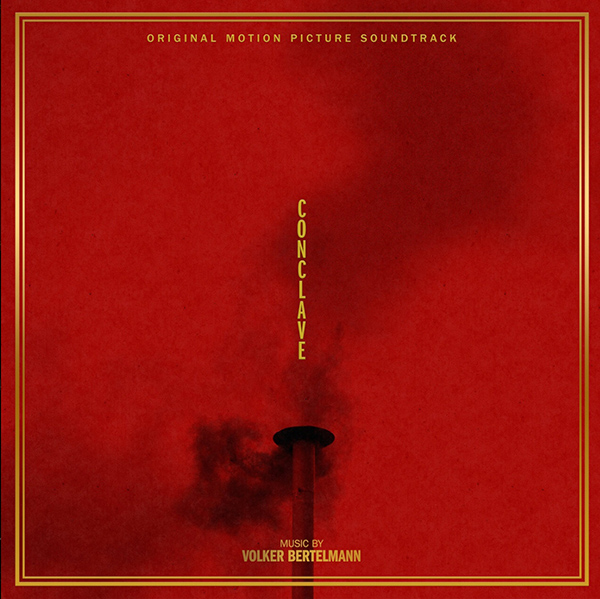
Volker Bertelmann, “Conclave: Original Motion Picture Soundtrack”
Conclave – Original Motion Picture Score by Volker Bertelmann: This is a lush, highly dynamic score with deep bass that will test any system. Sadly, it was never released as a CD, or as high- resolution downloadable files. There was an LP version which is very hard to get. I listened to it via Tidal and 48 kHz/24-bit. The Node Icon brought out the minute details in the score, and provided a realistic stereo image across my 2 speakers
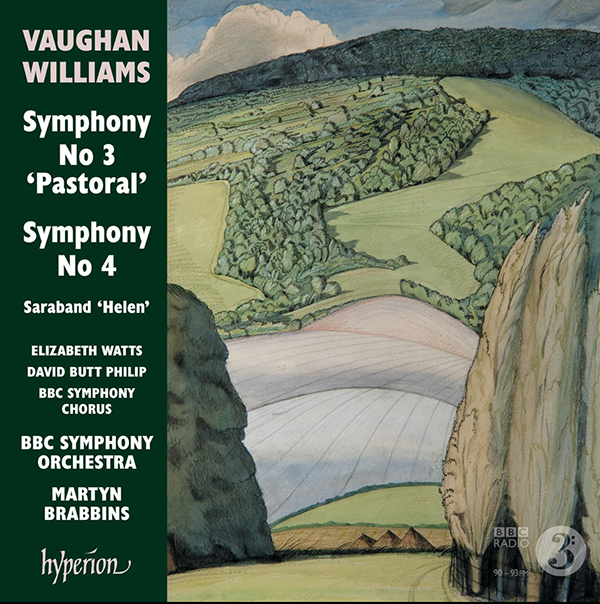
BBC Symphony Orchestra, Ralph Vaughan Williams & Martyn Brabbins, “Vaughan Williams: Symphony No. 3 ‘Pastoral’ & Symphony No. 4”
Vaughan Williams Symphony #3- BBC Symphony Orchestra and Chorus: This is a lovely Hyperion recording I have as a FLAC 96kHz/24-bit. It’s rendered beautifully by the Node Icon, with accurate details of the instruments. Also on the album is Vaughan Williams’ Saraband ‘Helen’ for Orchestra and chorus. Again, the sound was exemplary, and the chorus appeared accurately between my 2 stereo speakers. In the early days, digital sound never got this spatial aspect correct, but time and technology have moved on.
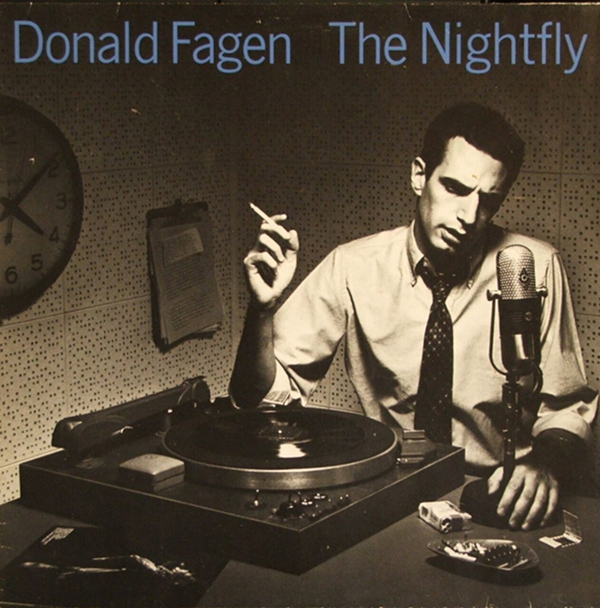
Donald Fagen, “The Nightfly”
Donald Fagan – The Nightfly: Pop/rock that brings back memories. Nicely produced in 1982, with a very realistic stereo image. I have a 48kHz/24-bit recording. The Node Icon lights up this recording.
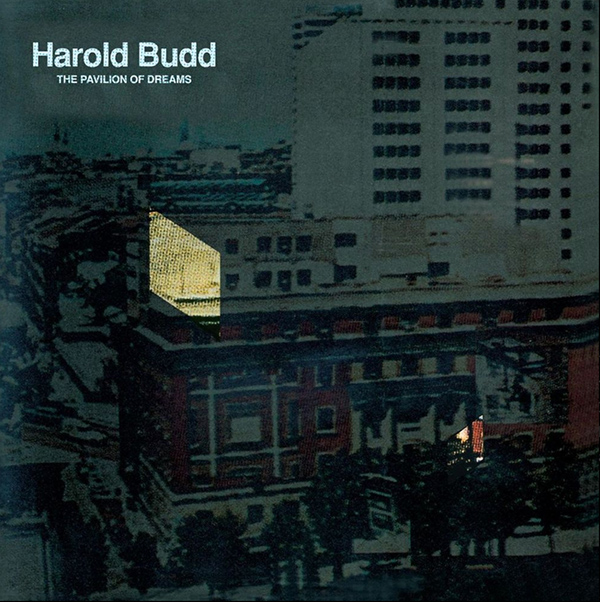
Harold Budd, “The Pavilion of Dreams”
Harold Budd – Pavilion of Dreams – From 1987, the minimalist Budd and this album features laid back percussion, marimba and vocals. These are slow, contemplative pieces that sound excellent on the Node Icon. Budd was never super popular, but those who discovered him treasure several of his albums.
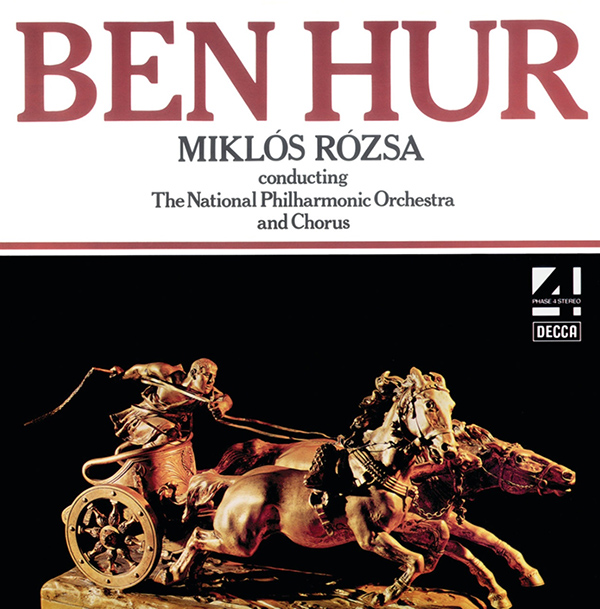
Miklós Rózsa conducting The National Philharmonic Orchestra and Chorus, “Ben-Hur”
Miklos Rozsa – Ben-Hur: This is the 2014 re-release of the Oscar winning soundtrack to the epic Ben-Hur. This is from the highly regarded Phase 4 catalog, and it’s a fine recording with composer Rozsa conducting the National Philharmonic Orchestra and Chorus. There’s great dynamic range here, and even when chorus and orchestra are singing together at high volume, the sound never becomes congested. The Node Icon does this recording justice, and it was like hearing it for the first time.
One of the niceties of the Node Icon is support for 2 headphones. There is a headphone jack on either side of the Node Icon, set up for a 1/4” plug. Normally I had the Node Icon set at a fixed volume level plugged into my processor. But when headphones were plugged in the screen noted the change and the volume control at the top became engaged so I could set the volume of the headphones to taste. It’s a very elegant and well thought out design.
I tested some Focal and Sennheiser headphones on the 2 outputs. There was plenty of volume to drive them, and I could hear no background noise or electronic hiss.
Secrets Sponsor
The Bluesound Node Icon reference music streamer is priced like other mid-priced streamers, but it’s lovely screen, excellent sound, and versatility to be used as a hub make it an excellent buy. In price and features, it’s similar to the Eversolo DMP-A6 Master Edition Streamer Network Player, which has been positively reviewed.
- Sound quality is excellent, as good as I’ve heard from a streamer.
- The Node Icon is well designed, and attractive in any room.
- Very high-quality display
- Headphone outputs are a plus and are not an afterthought. Very good audio quality.
- Works well with Roon. Glitch free.
- A dedicated remote. Everyone is offering remotes using a smartphone. Even for start, stop, or skipping tracks, a physical remote would be a plus.
- While a nice screen, it doesn’t do much but display album art. VU meters, or more info on what’s playing would be welcome
- There is no touchscreen feature for playback control.
The Eversolo streamers have more inputs and outputs and give you more options with how the content is displayed, but by many accounts the Node Icon has audibly better sound quality. My own non-master A6 is close in audio quality to the Node Icon, but there is a difference, and the high end is defined by subtleties.
There’s no shortage of able streaming products out there. The Node Icon should be on your list to seriously consider. The sound is excellent, easily equaling more expensive components. It may be the dual DAC design that’s providing the excellent sound, or it could be the sum of many parts, including the excellent and versatile BlueOS that powers it. I don’t think the Node Icon, which is really the top of the Bluesound line, is in any way a risky purchase.


